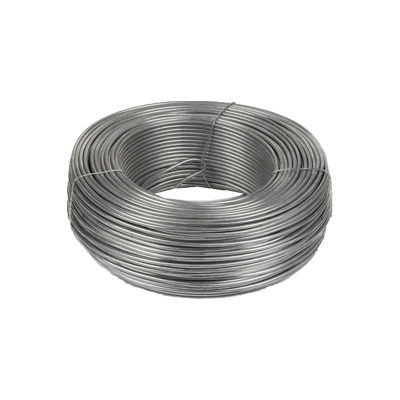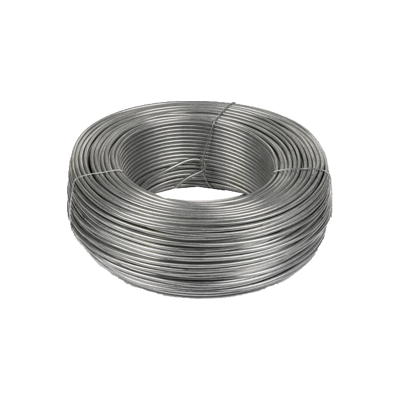Call +(254) 703 030 000 / 751 483 999 / 721 704 777
- Home
- Steel
- Carbon Steel Long Products
- Wire Rod
.....Read More
Frequently Asked Questions
What is wire rod used for?
Wire rod is a semi-finished product rolled from steel billets and is primarily used in the manufacturing of wire. It serves as a critical raw material in various industries due to its versatility and adaptability. Here are some of its primary uses:
1. **Wire Drawing**: Wire rod is drawn into thinner wires for use in electrical wiring, cables, and telecommunications. The drawn wire is essential for conducting electricity and signals.
2. **Construction**: In construction, wire rod is used to produce rebar ties, mesh, and nails. It is crucial for reinforcing concrete structures and providing stability and strength.
3. **Automotive Industry**: Wire rod is used to manufacture tire cords, springs, and fasteners. These components are vital for vehicle safety and performance.
4. **Manufacturing**: It is used to produce various fasteners like bolts, nuts, and screws, which are essential in machinery and equipment assembly.
5. **Agriculture**: Wire rod is used to make fencing, barbed wire, and other agricultural tools, providing security and support for farming activities.
6. **Consumer Goods**: It is used in the production of household items such as hangers, kitchen utensils, and shopping carts.
7. **Industrial Applications**: Wire rod is used in the production of welding electrodes and as a raw material for producing steel ropes and chains.
8. **Textile Industry**: It is used to produce wire mesh and other components for textile machinery.
Wire rod's adaptability to various processes like drawing, coiling, and heat treatment makes it an indispensable material across multiple sectors, contributing significantly to industrial and economic development.
How is wire rod manufactured?
Wire rod is manufactured through a series of processes that transform raw materials into a finished product suitable for various applications. The process begins with the selection of raw materials, typically billets or blooms, which are semi-finished steel products. These are heated in a furnace to a temperature suitable for hot rolling, usually around 1100 to 1300 degrees Celsius.
Once heated, the billets are passed through a series of rolling mills. These mills progressively reduce the cross-sectional area of the billets, elongating them into long, thin strands. The rolling process involves multiple stages, each with a set of rolls that apply pressure to shape the metal. The rolls are designed to gradually reduce the diameter of the wire rod while maintaining its structural integrity.
After rolling, the wire rod is cooled using controlled cooling methods. This cooling process is crucial as it affects the mechanical properties of the wire rod, such as its tensile strength and ductility. The cooling can be done in air or using water sprays, depending on the desired properties of the final product.
Once cooled, the wire rod is coiled into large bundles for easy handling and transportation. These coils are then subjected to quality control checks to ensure they meet the required specifications. Tests may include checking for surface defects, measuring diameter consistency, and assessing mechanical properties.
Finally, the wire rod is packaged and stored or shipped to customers. It can be further processed into various products, such as wires, springs, or cables, depending on the end-use requirements. The entire manufacturing process is designed to produce wire rods with precise dimensions and consistent quality, suitable for a wide range of industrial applications.
What are the different types of wire rod?
Wire rods are categorized based on their material composition, diameter, and intended application. Here are the main types:
1. **Carbon Steel Wire Rods**: These are the most common and are used in a variety of applications. They are further classified into:
- **Low Carbon**: Used for making nails, wire mesh, and other products requiring ductility.
- **Medium Carbon**: Suitable for manufacturing springs and wire ropes.
- **High Carbon**: Used in high-strength applications like tire cords and pre-stressed concrete strands.
2. **Alloy Steel Wire Rods**: These contain additional alloying elements like chromium, nickel, and vanadium to enhance properties such as strength, toughness, and wear resistance. They are used in automotive components and machinery parts.
3. **Stainless Steel Wire Rods**: Known for their corrosion resistance, these rods are used in applications requiring durability and aesthetic appeal, such as kitchenware, medical instruments, and construction.
4. **Aluminum Wire Rods**: Lightweight and corrosion-resistant, these are used in electrical transmission lines, automotive parts, and consumer electronics.
5. **Copper Wire Rods**: Known for excellent electrical conductivity, they are primarily used in electrical wiring, telecommunications, and electronics.
6. **Specialty Wire Rods**: These include rods made from materials like titanium, nickel alloys, and other specialized metals for specific industrial applications, such as aerospace and chemical processing.
7. **Galvanized Wire Rods**: Coated with zinc to prevent rusting, these are used in outdoor applications like fencing and construction.
8. **Cold Heading Quality (CHQ) Wire Rods**: Designed for cold forming processes, these rods are used in the production of fasteners and bolts.
Each type of wire rod is selected based on the specific requirements of the application, such as mechanical properties, environmental conditions, and cost considerations.
What is the standard diameter range for wire rods?
The standard diameter range for wire rods typically falls between 5.5 mm and 16 mm.
What industries commonly use wire rods?
Wire rods are commonly used in the following industries:
1. **Construction Industry**: Wire rods are used to produce steel mesh, nails, screws, and other fasteners essential for construction projects. They are also used in reinforcing concrete structures.
2. **Automotive Industry**: Wire rods are utilized in manufacturing various automotive components such as tire cords, springs, and fasteners. They are crucial for ensuring the structural integrity and safety of vehicles.
3. **Manufacturing Industry**: In general manufacturing, wire rods are used to produce industrial fasteners, chains, and wire ropes. They are also used in the production of machinery and equipment.
4. **Telecommunications Industry**: Wire rods are used to manufacture cables and wires essential for telecommunications infrastructure, including fiber optic cables and electrical wiring.
5. **Energy Sector**: In the energy sector, wire rods are used to produce conductors and cables for power transmission and distribution. They are also used in the construction of wind turbines and other renewable energy systems.
6. **Agriculture Industry**: Wire rods are used to make fencing, barbed wire, and other agricultural tools and equipment. They are essential for creating durable and reliable agricultural infrastructure.
7. **Aerospace Industry**: In aerospace, wire rods are used to manufacture high-strength fasteners and components that can withstand extreme conditions and stresses.
8. **Consumer Goods Industry**: Wire rods are used in the production of household items such as kitchen utensils, furniture, and appliances. They are also used in the manufacturing of shopping carts and other consumer products.
9. **Mining Industry**: Wire rods are used in the production of mining equipment and tools, including wire ropes and conveyor belts, which are essential for mining operations.
How does the steel grade affect wire rod properties?
Steel grade significantly influences the properties of wire rods, affecting their mechanical, chemical, and physical characteristics. Different steel grades are defined by their chemical composition, which includes varying amounts of carbon, manganese, silicon, sulfur, phosphorus, and other alloying elements like chromium, nickel, and molybdenum. These elements determine the wire rod's strength, ductility, hardness, and corrosion resistance.
1. **Carbon Content**: Higher carbon content generally increases the strength and hardness of the wire rod but reduces its ductility. Low-carbon steel grades are more ductile and easier to form, making them suitable for applications requiring flexibility.
2. **Alloying Elements**: Elements like manganese and silicon improve strength and toughness. Chromium and nickel enhance corrosion resistance and toughness, making certain grades suitable for harsh environments.
3. **Microstructure**: The steel grade affects the microstructure, which in turn influences mechanical properties. For instance, a fine-grained microstructure can enhance toughness and strength.
4. **Heat Treatment**: Different grades respond differently to heat treatment processes like annealing, quenching, and tempering, which can further modify properties such as hardness and tensile strength.
5. **Applications**: The choice of steel grade is crucial for specific applications. For example, high-strength low-alloy (HSLA) grades are used in construction for their strength-to-weight ratio, while stainless steel grades are chosen for their corrosion resistance in chemical and food processing industries.
6. **Cost and Availability**: Higher alloy content and specialized grades can increase costs and affect availability, influencing the choice of grade based on budget and application requirements.
In summary, the steel grade is a critical factor in determining the suitability of wire rods for specific applications, balancing properties like strength, ductility, and corrosion resistance to meet performance requirements.
What are the common applications of wire rods in construction and manufacturing?
Wire rods are versatile materials used extensively in both construction and manufacturing due to their adaptability and strength. In construction, wire rods are commonly used for reinforcing concrete structures. They are transformed into rebar, which provides tensile strength to concrete, enhancing its load-bearing capacity. Wire rods are also used in the production of wire mesh, which is employed in various construction applications such as flooring, roofing, and wall reinforcement.
In the manufacturing sector, wire rods serve as a primary material for producing fasteners like screws, bolts, and nuts, which are essential components in machinery, vehicles, and infrastructure. They are also used in the production of springs, which are critical in automotive and industrial machinery for absorbing shock and maintaining tension.
Wire rods are further utilized in the production of welding electrodes, which are essential for joining metal parts in construction and manufacturing. Additionally, they are drawn into wires for electrical applications, including power transmission and distribution, due to their excellent conductivity.
In the realm of fencing, wire rods are used to create barbed wire and chain-link fences, providing security and boundary demarcation for properties and construction sites. They are also employed in the production of cables and ropes, which are vital for lifting and securing loads in construction and shipping industries.
Overall, the adaptability of wire rods makes them indispensable in various applications, contributing significantly to the structural integrity and functionality of construction projects and manufactured goods.

